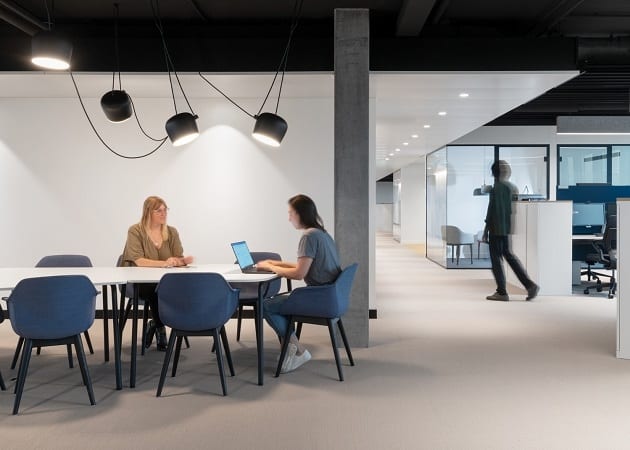 |||
|||
Read the latest from our collaboration with WOD – Women in Office Design, a networking and educational organisation set up by designer Harsha Kotak.
As workplace needs change rapidly, designers have to adapt quickly to understand how technology and rapid growth affects the spaces they are working on. Here, we speak to Natasha Bonugli, regional design principal at Unispace and member of OnOffice’s 2017 Power List, about the challenges of designing for changing headcounts, the merging of hospitality and workplaces, and how she handles the perfectionist nature of design.
OnOffice: As well as being named on our list of influential people in the workplace industry, you’ve won awards for innovation and designed the Warner Music HQ, named on the World’s Coolest Office List. What makes an innovative space in your experience?
Natasha Bonugli: I have been lucky enough to work with clients that have wanted to push the boundaries with their new spaces. Innovation can manifest itself in a number of ways. It usually derives from having an interesting challenge and working together as a project team to find new solutions that bring this vision to life. Innovation can be through brand interpretation, it can be through the experience you create for users or it can even be through the physical manifestation of materiality in the space.
 The Biogen office space
The Biogen office space
OO: How do you see the future of the workplace? Are there any trends you’re already seeing come into play?
I don’t tend to follow trends, but our research and experiences with clients are telling us about three things:
Focus on focus: As we continue to design open-plan environments, there is underlying need to provide the right balance of different types of spaces to support a level of focus within the workplace. We are seeing a shift where the open plan is becoming the zone where you do concentrative, focused work, and it is essential we provide the right amount of other spaces to move people away from the open-plan work areas. Open plan fails when there are too many distractions.
Homing from work: As we spend so much of our lives working, we are continuing to see the hospitality industry influence workplace design. There is a strong focus on providing softer, more home like environments within the workplace. With the rise of flexible working and home working, we need to design spaces that attract people back into the work environment to promote a strong sense of community.
 Coty’s office with relaxed seating
Coty’s office with relaxed seating
Read more: This is the main quality architects need to face the challenges of the future in office design
User interface: Offices are becoming far more customisable based on people’s data. Workplace apps are allowing our clients to adjust preferences to suit their daily needs as they occupy space. While offices continue to evolve, the future workplace will see interesting advancements in what amenities are provided in personalised environments and furniture and settings that are better for our health. There will be a stronger focus on people and their needs.
OO: What are the biggest challenges in designing office spaces, and how do these vary between the big flagship spaces and the smaller ones?
One of the biggest challenges we face in designing offices large or small is the fluctuation of headcounts. Businesses are constantly evolving and by the time we deliver a project, the headcount has probably changed a number of times. Designing in flexibility day one is key to providing an environment that can evolve during the lifespan of a lease.
OO: What do you enjoy most about your work?
Being able to transform the way a business works through space. Space can be a catalyst to enhance culture, improve collaboration and increase efficiency of business performance. Every project, client or brief is a new challenge. I am very fortunate to manage teams and work on projects across Europe.
 An office space for a financial company in London
An office space for a financial company in London
OO: What’s the best piece of advice you’ve ever been given?
“Good is good enough.” As architects and designers we are all perfectionists and its taken years to learn the art of working smarter not harder. Our industry is notorious for working long hours, but half the time we produce too much to convey a simple idea. It’s like the John Steinbeck quote: “Now you don’t have to be perfect, you can be good”.
OO: Are there any challenges you’ve faced as a woman in architecture? How important do you think it is for more women to enter the profession, and how do you think companies can encourage this?
Like most other professional industries, there are still some substantial hurdles we face as women when it comes to gender equality in the architectural/design world: a clear lack of female leadership in the industry, a significant pay gap, and of course the extremely complex issue of unconscious bias. While there are many inspiring women designers out there paving the way, the day-to-day reality is that most female designers don’t have enough women leaders, mentors, and role models around them. We need to continue to address these issues to ensure that talented young women are not deterred from entering into the design world. I’m proud to say that at Unispace, the majority of designers across Europe are women.
Follow WOD – Women in Office Design on Twitter and LinkedIn.
An award-winning architect (and previous entrant on the OnOffice Power List) gives her insights into the industry


























